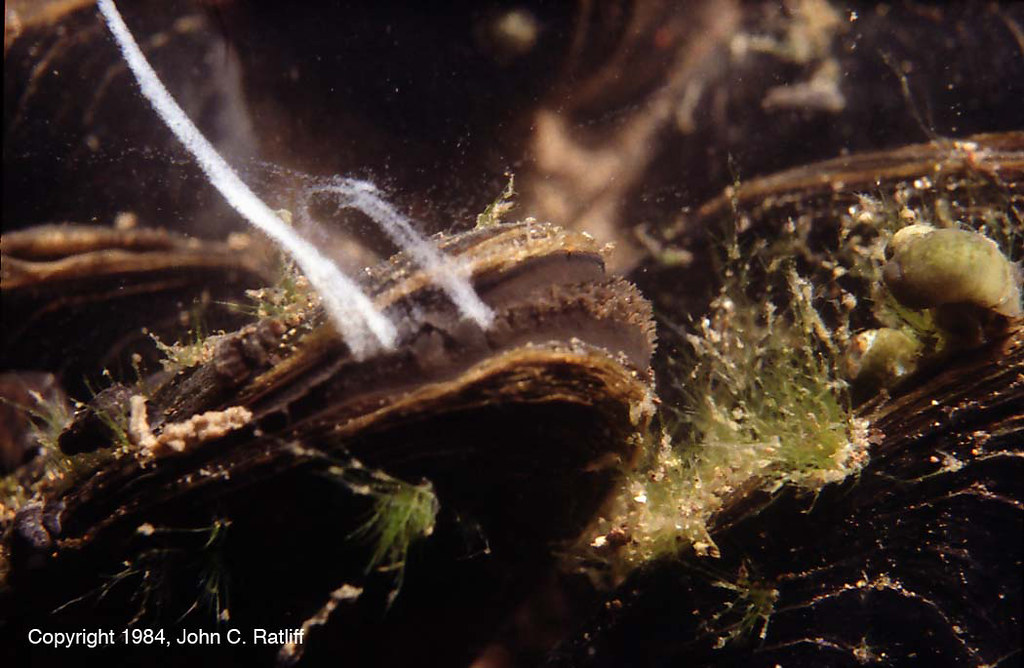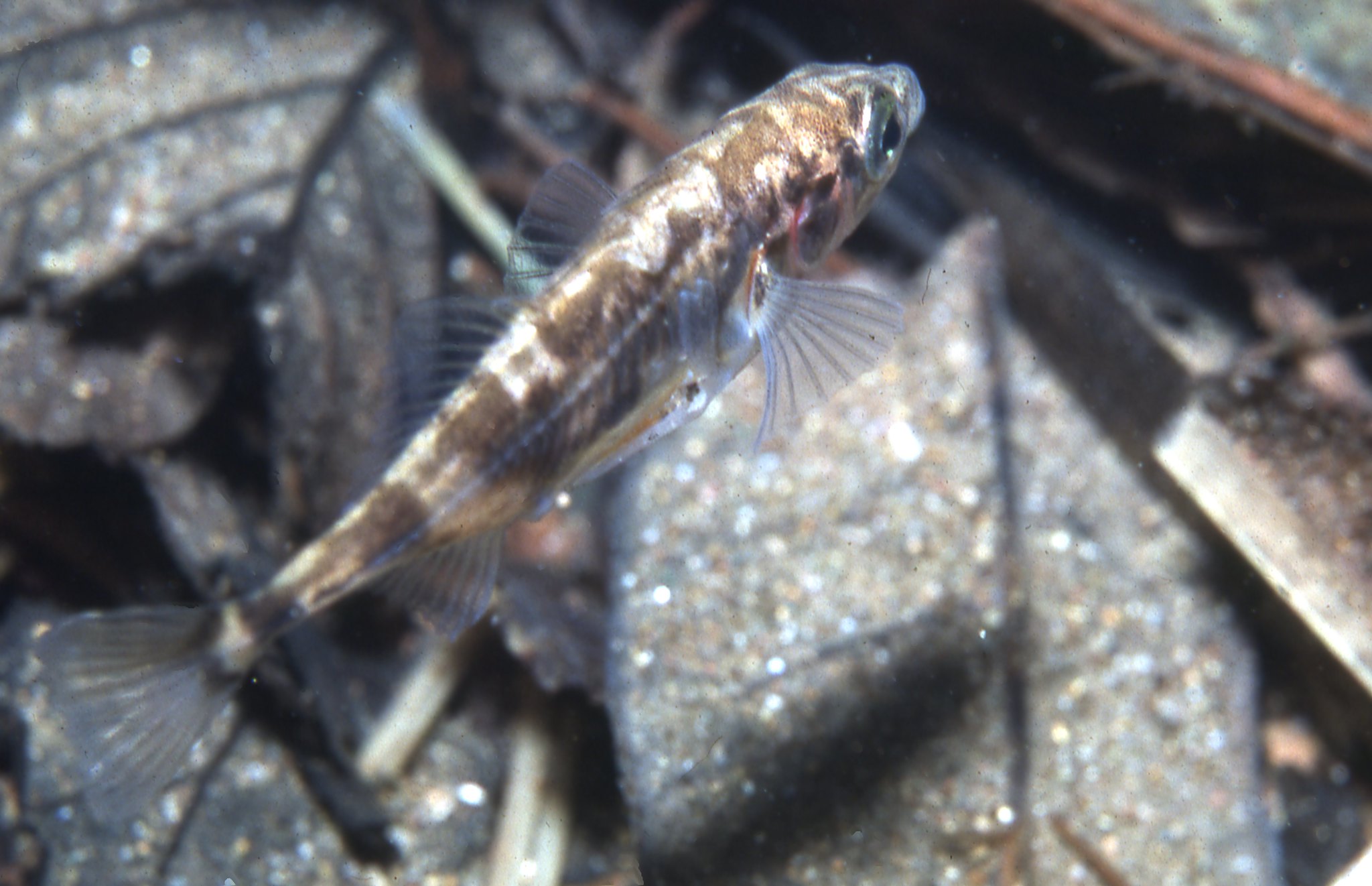Ikelite System for Canon F-1N back up!
Oct 20, 2020 16:59:12 GMT -8
Terry, technidiver, and 1 more like this
Post by SeaRat on Oct 20, 2020 16:59:12 GMT -8
Okay,
While you guys were working on regulators, I was trying to get my SubStrobe 150 strobe/housing/camera system up and going. The first thing on the list was to get my Canon F-1N film camera back in order and functioning. I took it out on several trips, and got photos outside on slide film. I recently got those slides back, and they were really good. I took this photo of a spider on its web in the dead of night, without any other light.
 Spider 100mm Macro013 by John Ratliff, on Flickr
Spider 100mm Macro013 by John Ratliff, on Flickr
Canon F-1N, 100mm Macro Lens with MacroLite Strobe, 1/90th second at F-22. Color slide film, Provia 100.
One thing I've found out is that the focusing with a film camera's manual/optical focus tools (split screen) are really great! For macro photos with my digital camera, sometimes the focus is off as I'm trying to focus without any focus aids, and the autofocus system is not that great with macro photography.
Now, the second problem was the strobe. I have several strobes, some small and one large, an Ikelite SubStrobe 150. I bought a new battery for it over a year ago, but I could not get it to charge. I took it back to BatteriesPlus, and they declined to work on it. I showed them the interior, and that one of the electrical lines was dead. That line appeeared to have a resistor in the circuit. The tech there said that this resistor may not be necessary, but I was hesitant to work on it myself. No other camera shop would work on it, and I didn't want the expense of sending a 20+ year old strobe back to Ikelite. Well, this last week I took it out again, and did some surgery. I disconnected this resistor, and reconnected the wire. Guess what--it took the charge. So I soldiered it up, used electrical tape to close the bare wires, and put the unit together. I then again charged it, and was pleased that it is working correctly. I could get it to fire by shorting the cord too!
So that left the camera/housing interface. Today I put the camera on my workbench, took the back of the housing, and placed the hot shoe onto the camera. I then hooked the strobe to the back of the camera using the existing circuit. Then, I triggered the camera--nothing. I tried again, and again, nothing. I took the battery out, and checked it with my battery checker--it read the required 22.5 volts. I placed it back into the carrier on the inside of the back housing cover, and then triggered the camera--again, nothing. I was getting discouraged. So I took the housing back out into the sunlight, and saw that there as a switch under the battery. I moved the switch, triggered the camera after re-hooking it up, and again--nothing. So, discouraged, I moved the switch back to its original position, and triggered the camera, not expecting much. FLASH!!! The strobe flashed! I tried it again, and again the circuit was complete, and the strobe flashed! WOW! Now, I have a complete camera system.
Why am I going back to film? Well, two reasons. First, I have photos that date back to the 1980s that I can still access as either negatives or slides. Here is one that I took in 1984 of mussels in the North Umpqua River spawning.
 Mussels spawning8a by John Ratliff, on Flickr
Mussels spawning8a by John Ratliff, on Flickr
Nikonos Ii, 1/60th second, F-stop unrecorded, using a Subsea 150 strobe. Color Negative film, ISO 100.
So the film camera has the ability to capture not only the image, but also to keep in more or less indefinately. It doesn't junk up my hard drive, and I can select the images that I want to scan, or have them scanned when they are developed. I did that recently with a trip out on my canoe with my wife. I took my Nikonos II camera, as it was impervious to being dunked. Here's one of the images from a canoe trip this summer with my wife, Chris. By the way, I kinda tested this theory about using the Nikonos II underwater camera when, in trying to get out of the canoe, the water was a bit deeper than I thought, which placed my foot on the bottom quite a bit further in front of me than I thought, and resulted in...yes, a dunking of me and the camera; not a problem for the Nikonos II.
 fullsizeoutput_2873 by John Ratliff, on Flickr
fullsizeoutput_2873 by John Ratliff, on Flickr
Nikonos II camera, F-16 at 1/125th second, color negative film, ISO 100.
All the photos in this post were from slides or color negatives, scanned. So I have a historical reference to these photos.
Does this mean I'll not use digital cameras? No, not by a long shot. But I don't have to spend $1-2,000 on a housing for my digital camera. I can use my old housing that I bought in the 1980s. I will be limited to 36 photos per dive, but that means I need to be disciplined in my picture-taking. It also means that I don't have to sort through hundreds of images, many the same, to get the one photo I was thinking about. So it is an adjunct to my photography. And, I'm pretty happy about that.
John
While you guys were working on regulators, I was trying to get my SubStrobe 150 strobe/housing/camera system up and going. The first thing on the list was to get my Canon F-1N film camera back in order and functioning. I took it out on several trips, and got photos outside on slide film. I recently got those slides back, and they were really good. I took this photo of a spider on its web in the dead of night, without any other light.
 Spider 100mm Macro013 by John Ratliff, on Flickr
Spider 100mm Macro013 by John Ratliff, on FlickrCanon F-1N, 100mm Macro Lens with MacroLite Strobe, 1/90th second at F-22. Color slide film, Provia 100.
One thing I've found out is that the focusing with a film camera's manual/optical focus tools (split screen) are really great! For macro photos with my digital camera, sometimes the focus is off as I'm trying to focus without any focus aids, and the autofocus system is not that great with macro photography.
Now, the second problem was the strobe. I have several strobes, some small and one large, an Ikelite SubStrobe 150. I bought a new battery for it over a year ago, but I could not get it to charge. I took it back to BatteriesPlus, and they declined to work on it. I showed them the interior, and that one of the electrical lines was dead. That line appeeared to have a resistor in the circuit. The tech there said that this resistor may not be necessary, but I was hesitant to work on it myself. No other camera shop would work on it, and I didn't want the expense of sending a 20+ year old strobe back to Ikelite. Well, this last week I took it out again, and did some surgery. I disconnected this resistor, and reconnected the wire. Guess what--it took the charge. So I soldiered it up, used electrical tape to close the bare wires, and put the unit together. I then again charged it, and was pleased that it is working correctly. I could get it to fire by shorting the cord too!
So that left the camera/housing interface. Today I put the camera on my workbench, took the back of the housing, and placed the hot shoe onto the camera. I then hooked the strobe to the back of the camera using the existing circuit. Then, I triggered the camera--nothing. I tried again, and again, nothing. I took the battery out, and checked it with my battery checker--it read the required 22.5 volts. I placed it back into the carrier on the inside of the back housing cover, and then triggered the camera--again, nothing. I was getting discouraged. So I took the housing back out into the sunlight, and saw that there as a switch under the battery. I moved the switch, triggered the camera after re-hooking it up, and again--nothing. So, discouraged, I moved the switch back to its original position, and triggered the camera, not expecting much. FLASH!!! The strobe flashed! I tried it again, and again the circuit was complete, and the strobe flashed! WOW! Now, I have a complete camera system.
Why am I going back to film? Well, two reasons. First, I have photos that date back to the 1980s that I can still access as either negatives or slides. Here is one that I took in 1984 of mussels in the North Umpqua River spawning.
 Mussels spawning8a by John Ratliff, on Flickr
Mussels spawning8a by John Ratliff, on FlickrNikonos Ii, 1/60th second, F-stop unrecorded, using a Subsea 150 strobe. Color Negative film, ISO 100.
So the film camera has the ability to capture not only the image, but also to keep in more or less indefinately. It doesn't junk up my hard drive, and I can select the images that I want to scan, or have them scanned when they are developed. I did that recently with a trip out on my canoe with my wife. I took my Nikonos II camera, as it was impervious to being dunked. Here's one of the images from a canoe trip this summer with my wife, Chris. By the way, I kinda tested this theory about using the Nikonos II underwater camera when, in trying to get out of the canoe, the water was a bit deeper than I thought, which placed my foot on the bottom quite a bit further in front of me than I thought, and resulted in...yes, a dunking of me and the camera; not a problem for the Nikonos II.
 fullsizeoutput_2873 by John Ratliff, on Flickr
fullsizeoutput_2873 by John Ratliff, on FlickrNikonos II camera, F-16 at 1/125th second, color negative film, ISO 100.
All the photos in this post were from slides or color negatives, scanned. So I have a historical reference to these photos.
Does this mean I'll not use digital cameras? No, not by a long shot. But I don't have to spend $1-2,000 on a housing for my digital camera. I can use my old housing that I bought in the 1980s. I will be limited to 36 photos per dive, but that means I need to be disciplined in my picture-taking. It also means that I don't have to sort through hundreds of images, many the same, to get the one photo I was thinking about. So it is an adjunct to my photography. And, I'm pretty happy about that.
John













